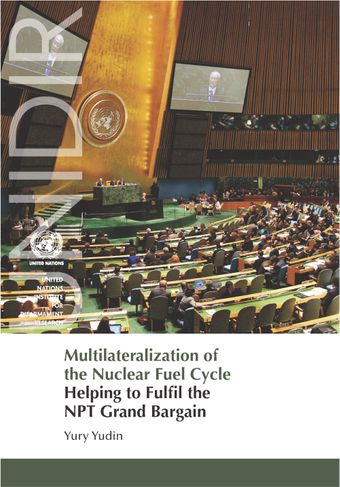Introduction

- Author: United Nations Institute for Disarmament Research
- Main Title: Multilateralization of the Nuclear Fuel Cycle , pp 1-4
- Publication Date: March 2013
- DOI: https://doi.org/10.18356/74c24bd2-en
- Language: English
- Previous Chapter
- Table of Contents
- Next Chapter
The year 2010 marks the fortieth anniversary of the entry into force of the Treaty on the Non-Proliferation of Nuclear Weapons (NPT), the cornerstone of the nuclear non-proliferation regime and the most adhered to arms control treaty in the world. The NPT can be understood as a bargain between five states that have nuclear weapons and 184 states that do not have nuclear weapons. It is a complex compromise, which rests on three fundamental issues, or “pillars”—non-proliferation, the peaceful use of nuclear energy and disarmament. States with nuclear weapons commit not to transfer them to any recipient whatsoever while states without nuclear weapons undertake not to acquire any. To compensate for the subsequent distinction between “haves” and “have-nots”, the NPT grants all states parties the inalienable right “to develop research, production and use of nuclear energy for peaceful purposes”. It also obligates all states to work in good faith towards nuclear disarmament.
-
From This Site
/content/books/9789210551151c009dcterms_title,dcterms_subject,pub_keyword-contentType:Journal -contentType:Contributor -contentType:Concept -contentType:Institution105

